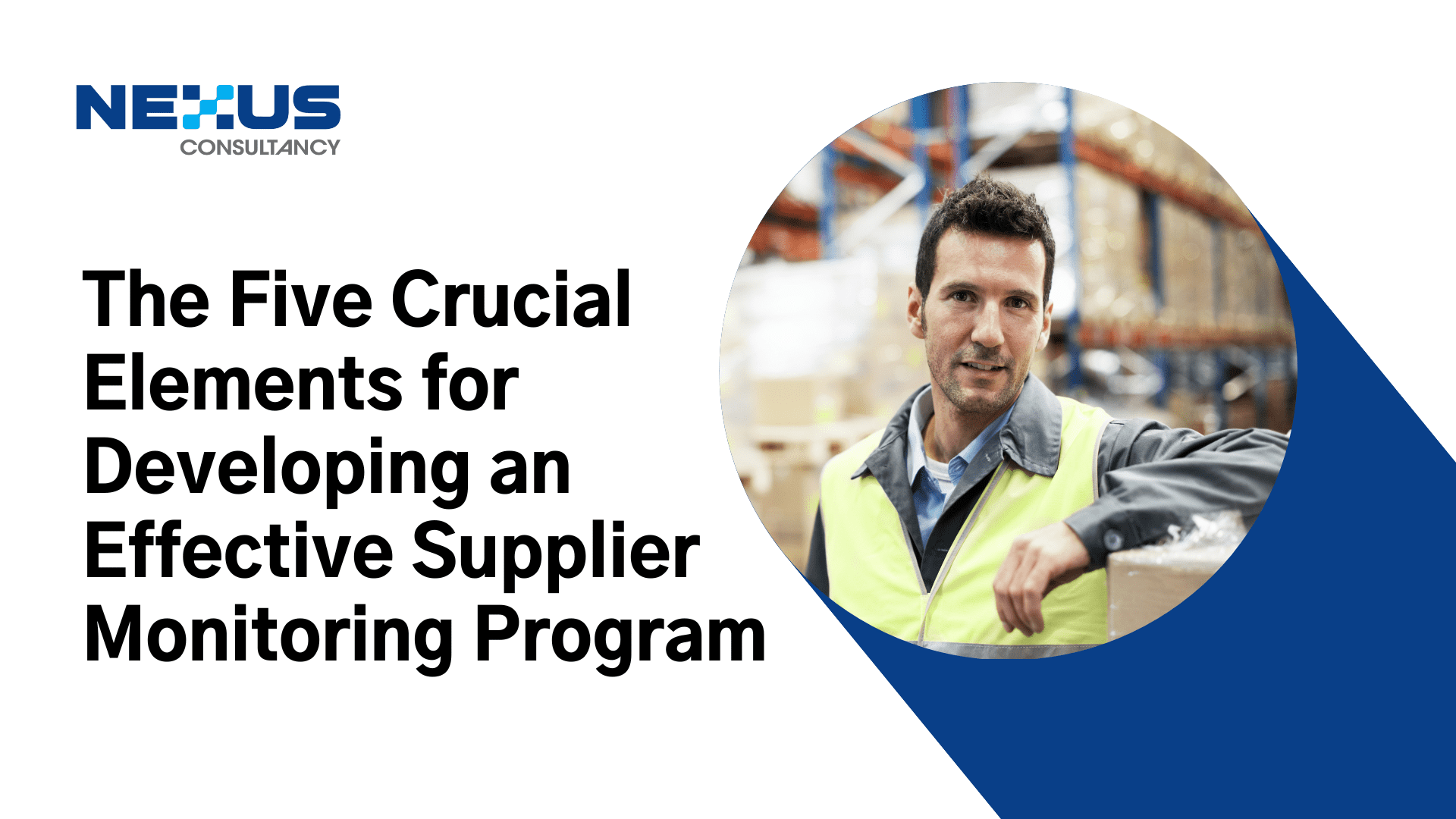
Danielle Tan
Chief Operating Officer
By monitoring and evaluating suppliers’ performance, manufacturers can identify and address potential risks and non-conformances before they become major issues.

In the food manufacturing industry, the safety and quality of products are of utmost importance. This is why it is essential to establish and maintain a robust supplier monitoring program to ensure that the materials, products, and services provided by suppliers meet the necessary safety and quality standards. Failing to monitor suppliers can lead to significant risks that could compromise the safety of the products and ultimately harm consumers. These risks include the introduction of contaminated materials, non-conforming products, regulatory violations, and reputational damage, among others. In this context, it is crucial to understand the potential risks of not monitoring suppliers and take appropriate measures to mitigate them.
To ensure effective supplier monitoring in your Food Safety Management System, it is essential to include the following five crucial elements:

#1. Supplier Agreement
The supplier agreement outlines the necessary assessment criteria and controls that suppliers must adhere to. These criteria and controls must be agreed upon and monitored for compliance.
Contract or agreement reviews should occur frequently enough to ensure current information, at a minimum every three years, considering product changes, suppliers, regulations, and other risks. These reviews and changes must be documented. Contracts or formal agreements must be in place to ensure suppliers are operating according to appropriate standards, including relevant legislation, product traceability maintenance, conformance to specification, service level agreement, subcontracting restrictions, and restrictions for mixed loads. All materials, products, and services must be purchased from the approved supplier list unless handled as exceptions.

#2. Approved Supplier List
An up-to-date list of approved suppliers must be maintained for materials, products, and their respective suppliers, and this list must be available in either hard or electronic format to relevant personnel such as goods in staff, procurement, and product development teams.

#3. Communicate Change
When changes to the approved supplier list occur, including changes to materials and products, the change must be communicated to relevant personnel in a timely manner to ensure that only approved materials of the correct version are accepted. Supplier monitoring must continuously assess supplier performance to ensure materials, products, and services they supply do not pose a risk to the product, customer, or consumer.
#4. Supplier Performance Monitoring
Defined and documented performance criteria must be used to monitor suppliers, including incidences of contamination, non-conforming materials or products, results of material or product tests or inspections, complaints, regulatory warnings or alerts, customer rejections, customer or consumer feedback, and punctuality of deliveries against planned delivery times.
The review frequency of the monitoring criteria should be based on risk, but not less than once every three years, and must be documented. Following a review of the supplier’s performance criteria, the risk assessment must be updated, and the resulting supplier risk rating documented. Suppliers must be reapproved based on the new risk rating, and records of the reapproval must be kept. Improvements required must be documented, communicated to the supplier, and an action plan agreed upon.

#5. Supplier Corrective Actions
Develop a process for addressing nonconformances and deficiencies identified during supplier monitoring activities. This process should include corrective action requests, follow-up verification, and documentation of the corrective action taken by the supplier.
Conclusion
In conclusion, implementing a robust supplier monitoring program is essential for ensuring food safety and quality in the food manufacturing industry. By monitoring and evaluating suppliers’ performance, manufacturers can identify and address potential risks and non-conformances before they become major issues. This helps to protect the consumers and safeguard the brand reputation of the manufacturer. A well-designed supplier monitoring program that includes the key elements of supplier approval, performance monitoring, corrective actions, and communication can go a long way in promoting food safety and quality in the food manufacturing industry. Therefore, it is important for manufacturers to prioritize the implementation of a comprehensive supplier monitoring program as a critical component of their food safety management system.






